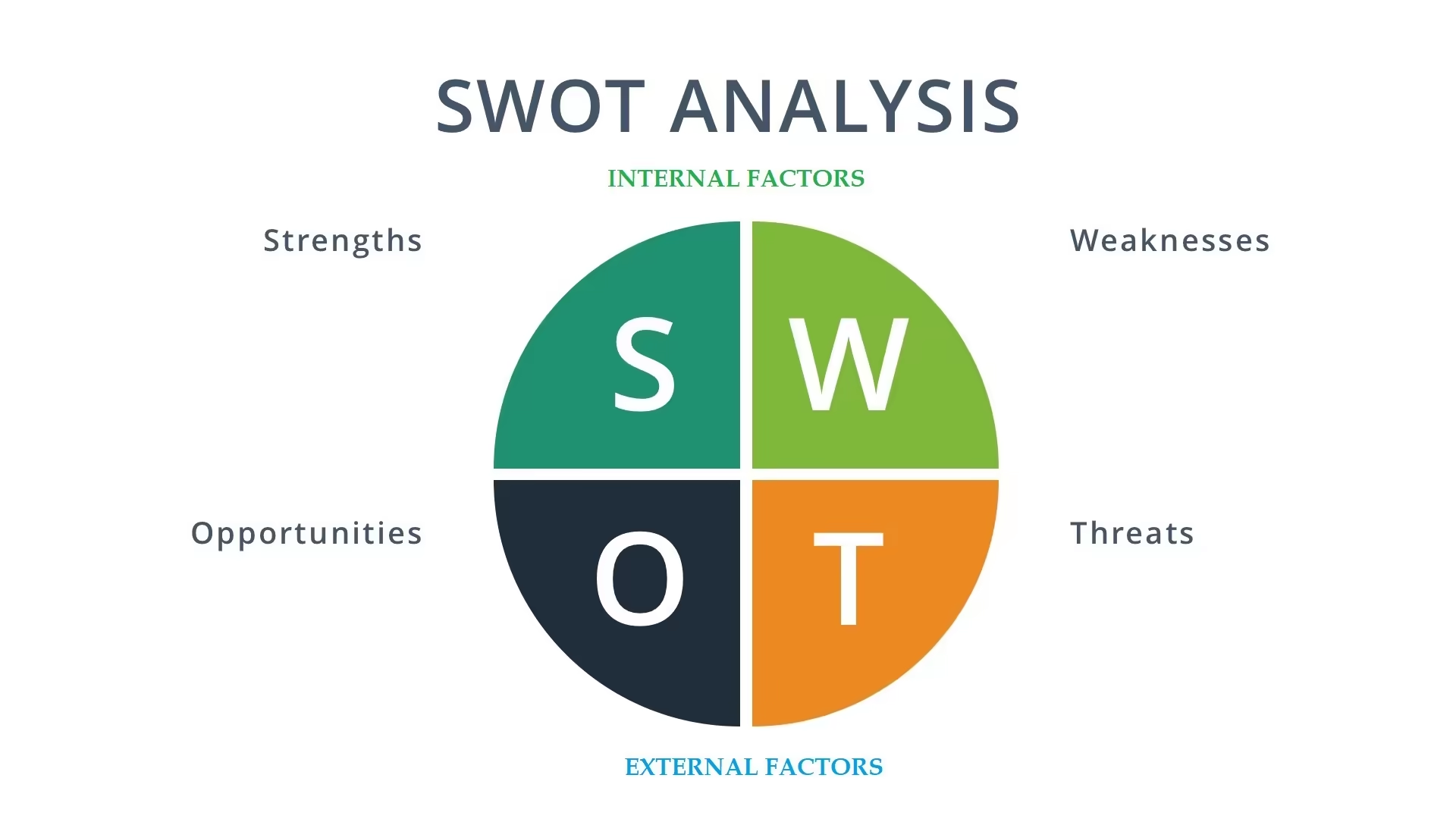Often the way competencies get deployed will differ from how another person with similar competencies will behave in a similar role. This is where a SWOT analysis (Strengths, Weaknesses, Opportunities, and Threats) of the individual can help make a difference. The SWOT gives a good snapshot of the individual's approach as well as her competencies. Moreover, unlike other methods of competency mapping that require a high degree of expertise and skills, a SWOT is relatively easier to implement and can deliver value at almost any level.
Conducting a SWOT analysis of your business is a lot more fun than it sounds. It will not take much time, and doing it forces you to think about your business in a whole new way.
The point of a SWOT analysis is to help you develop a strong business strategy by making sure you’ve considered all of your business’s strengths and weaknesses, as well as the opportunities and threats it faces in the marketplace.
The importance of SWOT analyses
The SWOT analysis for an employee commences with an evaluation of the individual’s strengths. An employee should write down all of his/her strengths during this stage of the SWOT analysis. She can physically write down his/her strengths, or use available software, experience and even strong oral and written communication skills. The key to evaluating strengths is comparing individual skills versus other employees of the same pay grade.
The effects of SWOT analysis
The next phase of SWOT analysis for an employee includes evaluating and recording various weaknesses. An employee’s weakness can be a lack of experience in a certain job duty, according to the article called “SWOT Your Way to Better Performance” by Badmapriya Murugesan (2018). For instance, a marketing research analyst may not have database management experience. Consequently, this employee may need to ask another person to run a query for her survey, which entails typing out commands on a computer to create a list of customers.
A lack of technical skills can render the employee more vulnerable to downsizing if the company needs to cut jobs. This would be especially the case if other marketing analysts are highly skilled in database management.
Identification
The third phase of SWOT analysis is for the employee to identify certain opportunities in her current job. For instance, the employee may discover that his/her company is expanding the marketing research department. Consequently, there may be an opportunity for him to become more specialised in competitive analysis, improve his computer skills through company-paid training. These skills could potentially make the employee more valuable to the company.
Considerations
Threats are usually the fourth phase of the individual SWOT analysis. Threats can include a decrease in company sales and profits, new technology from competitors and possible takeover of the company. Any external threat that affects the company can potentially threaten an employee's career. An increased workload can also be a potential threat, which can also be a potential threat which can inevitably affect an employee's performance.
Prevention/Solution
An employee’s primary goal for concluding a SWOT analysis is to determine ways to secure his/her future with the company, as well as to improve his/her chances of getting promoted. This can be accomplished by using the SWOT analysis to match certain internal factors, such as strengths and weakness with external factors like opportunities and threats. For example, a regional manager's leadership skills may help him/her get promoted to be the corporate office. On the contrary, an employee that has no college degree may pursue her degree if his/her company starts requiring a degree for his/her job.
Below are 5 steps you can use to conduct a SWOT analysis for yourself:
Step 1: Build an Objective
Firstly, you need to have an objective in mind, that is, why you are taking this analysis and what you intended to find out. This should also contain what is your key topic or title you want to analyse. This type of analysis can be sued for any type of business. There are many SWOT analysis in PowerPoint that might be of use to you found at templet.net.
Step 2: Design a Square Grid
The next step would be to draw a square grid, dividing into 4 smaller equal parts. This would help in keeping your analysis legible and neat. Since analysis helps you in understanding a particular problem or issue better and solve it strategically, you must analyse your employees regularly. You may also see marketing SWOT analysis templates found at templet.net.
Step 3: Label Each Box
Once you have divided them into equal portions, label each box. They should be labelled accordingly. As strengths and weaknesses are internal factors, they should be placed above and opportunities and threats are external factors and should be placed together. You can use different SWOT analysis examples to keep track of all the factors that motivate your employees to try and work better in your working environment.
Step 4: Add Your SWOTs
Once you are done labelling each box, next would be to add the content in it. This content should be in bullet points, as this will make your analysis look readable and clean. Make them look different from one another as this makes it easier for you to understand what you are trying to analyse.
Step 5: Final Conclusion
After you are done drafting each point, make sure that you make a conclusion as to what are the positive and negative outcomes of your analysis and what you are going to do about it. Here is where you will also make use of your objective to check whether or not you have fulfilled your goal and adjustments have to be made accordingly.

